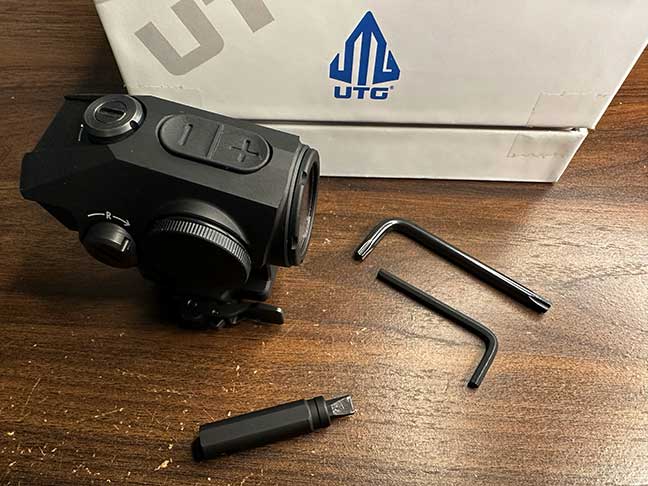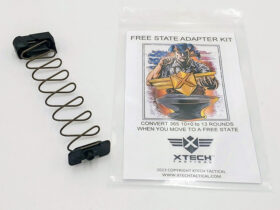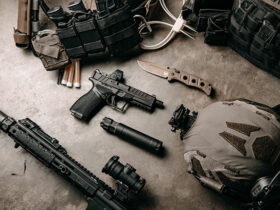Two things are involved when beginning to choose the components going into an AR-15 build — time and money. Each is valuable. It isn’t always a build from scratch choosing parts. Often, it is simply improving an existing firearm.
I think the barrel and trigger should receive their fair share of attention. I admit, I spend too much time on the trigger during most of my rifle builds. I suppose it is because the trigger is so easy to change, and many of us think the trigger is a shortcut to marksmanship. This isn’t true.

For a trained shooter, a good trigger certainly helps. If you own a factory rifle, delivered with the usual 7-pound trigger, perhaps you should spend time mastering the piece before you consider changing the trigger. Maybe burn the barrel out learning to shoot…
Small Steps
Beginning, or even experienced, shooters should begin with the typical AR-15 single-stage trigger. If kept clean and lubricated, these triggers ‘smooth in’ with use. You don’t have to fire a ton of ammunition, simply (safely) conduct dry fire. After all, dry fire is a cornerstone of marksmanship.
Whatever trigger you end up with, you should execute several dozen repetitions before you head to the range. If you are looking for a shortcut to trigger selection, you won’t find it here. The choice is personal and depends on your needs and shooting style. Budget comes into play.
We all have a budget, some larger than others. I have enjoyed excellent results with Wilson Combat, Elftmann, Hiperfire, and CMC triggers. The Geissele, Rise, and POF have all given good service too. Probably the most used trigger over the past few years has been the TR TTU 3G or 3-Gun trigger from Wilson Combat. I don’t have the time, capital, or associates to test them all, but I have tested quite a few including different models from a single maker such as Hiperfire.
There are a few rules we need to follow. First, let the task at hand decide which trigger group you purchase. Second, don’t go too cheap. Gun shows are full of cheap stuff and often overpriced good stuff. It is best to purchase from an established outlet such as Cheaper Than Dirt!

If you buy cheap, you buy twice. Better to use the factory trigger until you can afford the real deal that you really want. Monsters and threats of the day are not the purpose for the trigger. Shooting competition or hunting at a specified distance with one critical shot is one criterion to making a choice. Rapid fire engagement in 3-Gun competition may be another. Don’t buy it because I said so, buy it because it fits the role.
Let’s look at the parts of the trigger, so you will understand exactly what you are looking for. When we say trigger, we are actually talking about several parts. To be accurate, we should say trigger group.
The hammer is powered by the hammer spring. Then the trigger — the curved or flat part your trigger finger presses during firing — controls the hammer drop. Press the trigger, and the sear is moved. The hammer drops, firing the rifle. The sear is important as it holds the hammer in place when the hammer is under pressure (cocked) and ready to drop with sear release instigated by the trigger’s motion.

The disconnect is important. When a bolt recoils and resets the trigger action, several things occur. This is called reset. A sharp reset is important. The trigger must be nearly the same let-off each time the trigger is pressed. The reset must be sharp to firmly hold the hammer and sear in the proper state.
The disconnect contacts the hammer and doesn’t allow it to keep firing. The disconnect also makes the action semi-automatic. The disconnect catches the hammer hook and arrests its travel. (Some say disconnector, and that’s fine. However, I was taught that disconnect was proper during my technical education.) The disconnect stops the hammer just before reset.
Single-Stage Triggers
Most AR-15 trigger actions are the type deemed single-stage. While the default, and perhaps most inexpensive trigger, they are also reliable in quality examples. The bolt is racked, and the trigger action is set and ready to fire. To drop the hammer, the trigger is pressed and the rifle fires.

The trigger directly engages the sear. Single-stage triggers, as delivered in factory rifles, often exhibit a trigger compression (pull weight) of seven pounds or a little more. A precision rifle may be set up with an aftermarket single-stage trigger of three pounds or less.
For personal defense or service use, a trigger action should be five pounds (minimum) to prevent inadvertent firing or the trigger bumping off the sear if dropped. After all, trigger weight is a product of trigger engagement with other moving parts.
Two-Stage Triggers
A two-stage trigger usually offers a lighter take-up — at least in the initial part of the trigger press. However, the initial press is met by a slightly heavier stop, often referred to as a wall, before the trigger releases the sear. The trigger compression is simply the total amount of energy needed to drop the hammer by releasing the sear.
The initial take-up may be light at two pounds and the wall may be two pounds, for a total of a four-pound trigger compression, poundage, break… In the case of the two-stage trigger, excellent shooting may be done by quickly compressing the trigger in the initial stage and then breaking the remaining trigger action weight.
A two-stage trigger derives its weight of pull from different trigger springs. These may be offered at a pull weight of as little as 2 pounds. I think that very few shooters will properly handle a 2-pound trigger. Many who think this will be a good weight for their use lack the experience to properly handle a light trigger. I am comfortable with a 4-pound trigger action and feel that this is ideal for hunting and competition use.

A real issue is quality. A few years ago, I built a rifle using the absolute best materials, including an Aero Precision upper and lower receiver and good quality barrel. I went cheap with a standard trigger from a maker who offers some of the most inexpensive rifles on the market. It was heavy at 7 pounds, but overall, I felt it worked OK.
I used it in the rifle for about a year and less than 2,000 rounds. I simply didn’t get around to changing the trigger. The trigger action came apart. It literally broke and failed. I have often thought that a lighter trigger action, with a light let-off, may not last as long as it has less contact with the sear and trigger.
This hasn’t proven true with the Hiperfire at well over 3,000 rounds. I have one of the first Wilson Combat triggers in a rifle that has logged many thousands of rounds. (Huge round counts and burnouts are largely a product of fiction unfortunately, but some rifles do get hard use.)

I hope I don’t have to mention this, but never modify an existing trigger. That is a fool’s errand. Many of the metals used in modern triggers have a coating that once broken allows rapid wear on the underlying metal. That creates a real chance of a runaway trigger, which is never a good thing.
It is possible to change out a hammer spring on an existing unit. Use a full power hammer spring if the rifle is intended for serious use. Serious use (for me) includes hunting. I also would like to use one for competition. But then again, none are as serious as personal defense.
Unless you are very experienced, a good quality, standard, single-stage trigger is best for most uses. For those in service who may face an active shooter, the range is not likely to be more than 50 yards, but precision will be of paramount importance. A good single-stage trigger is good for these uses. The two-stage trigger is a good hunting trigger and for 3-Gun use.

9mm AR Triggers
The AR 9mm features the same outline, receivers, fit, feel, and operating controls as the 5.56mm AR. However, the 9mm AR is a blowback design. While the 9mm is far less powerful than the 5.56mm/.223, the 9mm uses a heavier bolt to make the blowback work in what is originally a gas-powered rifle.
A standard trigger with a heavy pull is fine for the 9mm AR rifle. Pistol caliber carbines take a hard hit that creates a lot of momentum in the action. This means that the trigger must be rated for the 9mm carbine, which has more — not less — momentum in the bolt than the .223 caliber rifle. Choosing an AR-15 trigger should be addressed in several steps. Define the purpose or likely role(s) of the rifle. Consider the quality of the build and the likely expense. Take your own experience into consideration when making your choice, and choose a trigger unit with a good reputation and warranty.
Have you changed the trigger on your AR? Which one did you select and why? Do you prefer one or two-stage triggers and why? Share your answers in the Comment section.










Leave a Reply